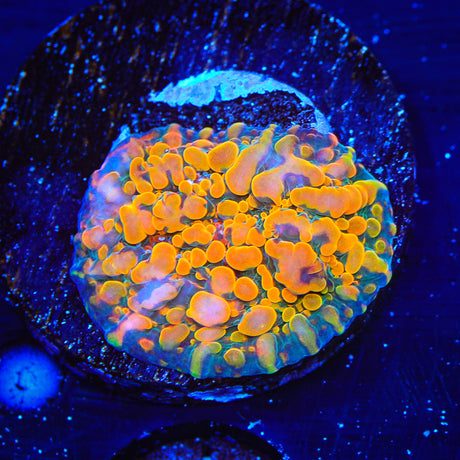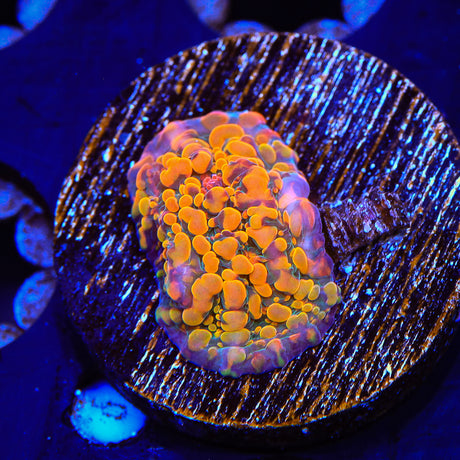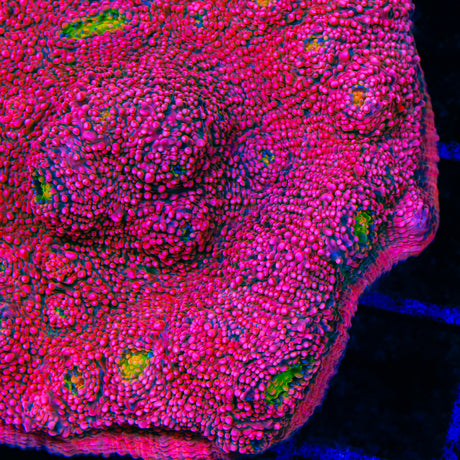Chalice corals are one of the first collector corals desired by reef hobbyists. The reef hobby has coined the name chalice for several different genus of chalice coral: mycedium, oxypora, echinomorpha and echinophyllia. These types of coral have similar characteristics and growth patterns.
Chalices generally encrust over the surrounding rock and have the potential to plate around its base. Their multi-colored eyes contrast their vibrant coral base with captivating color combinations. Some chalices have extravagant colored rims, such as the TSA pink watermelon and TSA smoothie king chalice. The luminescent color of the TSA space invader chalice is simply hypnotizing.
Chalices prefer low to moderate lighting, ranging from 80-120 par. The coral will quickly let you know if the lighting is too intense by compressing its tissue against the skeleton. Chalices display their best colors under a blue light spectrum.
Provide low to moderate water flow, avoiding debris and detritus from building upon the coral’s delicate tissue. Some chalices will have sweeper tentacles, potentially attacking their neighbors. One popular offender is the Hollywood stunner chalice. This plating chalice can produce long sweepers tentacles attacking any nearby corals.
This coral's primary food source will be provided by their zooxanthellae algae but occasional feedings of powdered coral foods and pellets will aid in their growth. Here at Top Shelf Aquatics, we use both Fauna Marin LPS Pellets and Benepets. Be sure to turn off your flow during feedings because chalices can take up to 15-20 minutes to consume their meals.
Chalices are a fusion of color, worthy of a spot in any reef aquarium and hobbyists of all experience levels are eager to collect the vast variety of color combinations.
Check out more articles in our Coral Care Series:















